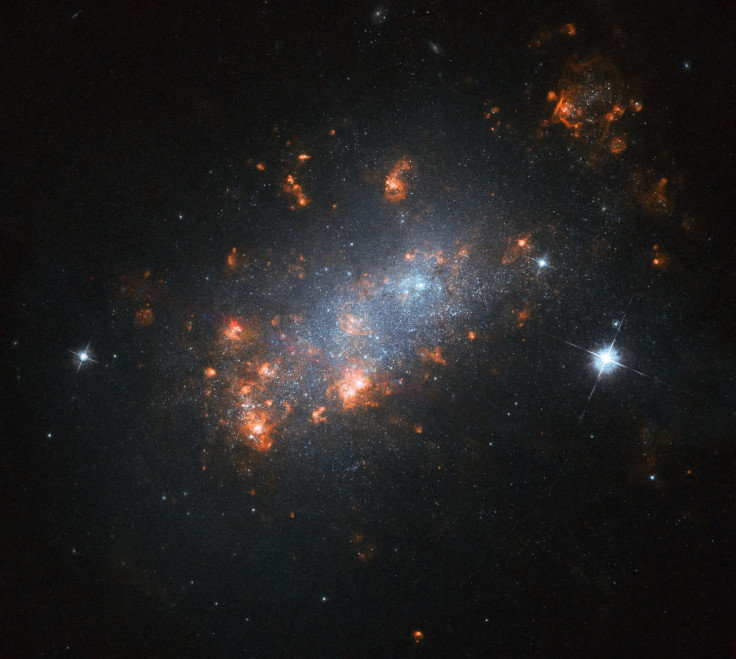NASA Hubble Snaps Breathtaking Cherry Blossoms In Space

NASA’s Hubble Space Telescope has captured a beautiful image of a distant dwarf galaxy. Due to the unique nature of the galaxy, it resembles a flowering cherry blossom tree.
The new image spotted by Hubble was that of the galaxy NGC 1156. Located in the constellation Aries that’s about 25 million light years from Earth, NGC 1156 is classified as an irregular dwarf galaxy. It got its classification due to the absence of a spiral or round shape that’s common in other galaxies such as the Milky Way.
In the photo taken by Hubble, bright pinkish clusters can be seen scattered across the galaxy. According to NASA, these clusters are actually stellar nurseries or regions that host new stars as they spring to life. The light emitted by these new stars interact with pockets of hydrogen gas in the surrounding area, causing it to glow with a pinkish hue.
NASA noted that the combination of these colors as well as the other bright features scattered across NGC 1156 make the galaxy look like a cherry blossom tree as it flourishes during springtime.
Aside from the bright colors produced by the galaxy, NASA also noticed an odd characteristic of NGC 1156 that provides a clue regarding its past. As compared to the other materials present within the galaxy, the gas pockets in NGC 1156 rotate in the opposite direction.
According to NASA, this suggests that NGC 1156 may have had a close encounter or near-collision with another galaxy.
“Some pockets of gas within NGC 1156 rotate in the opposite direction to the rest of the galaxy, suggesting that there has been a close encounter with another galaxy in NGC 1156’s past,” NASA said in a statement.
“The gravity of this other galaxy – and the turbulent chaos of such as interaction – could have scrambled the likely more orderly rotation of material within NGC 1156, producing the odd behavior we see today,” the space agency added.
According to Sci-News, NGC 1156 was first discovered in 1786 by British astronomer William Herschel. Since its discovery, it has been regarded as one of the most highly isolated galaxies.
© Copyright IBTimes 2024. All rights reserved.





















